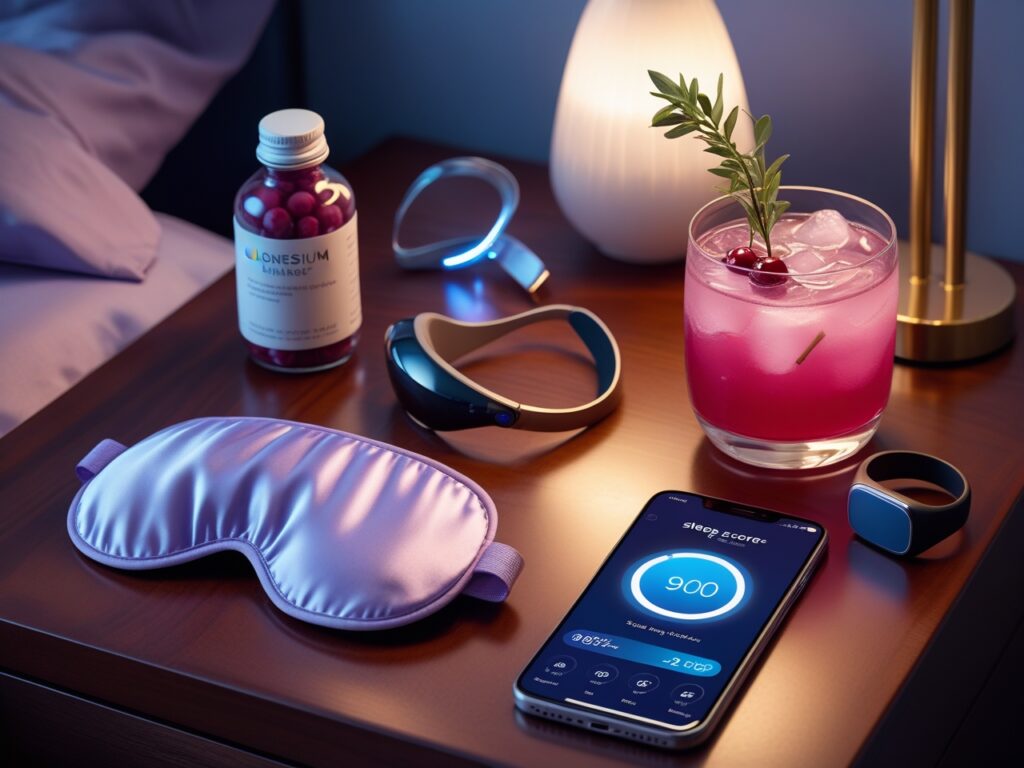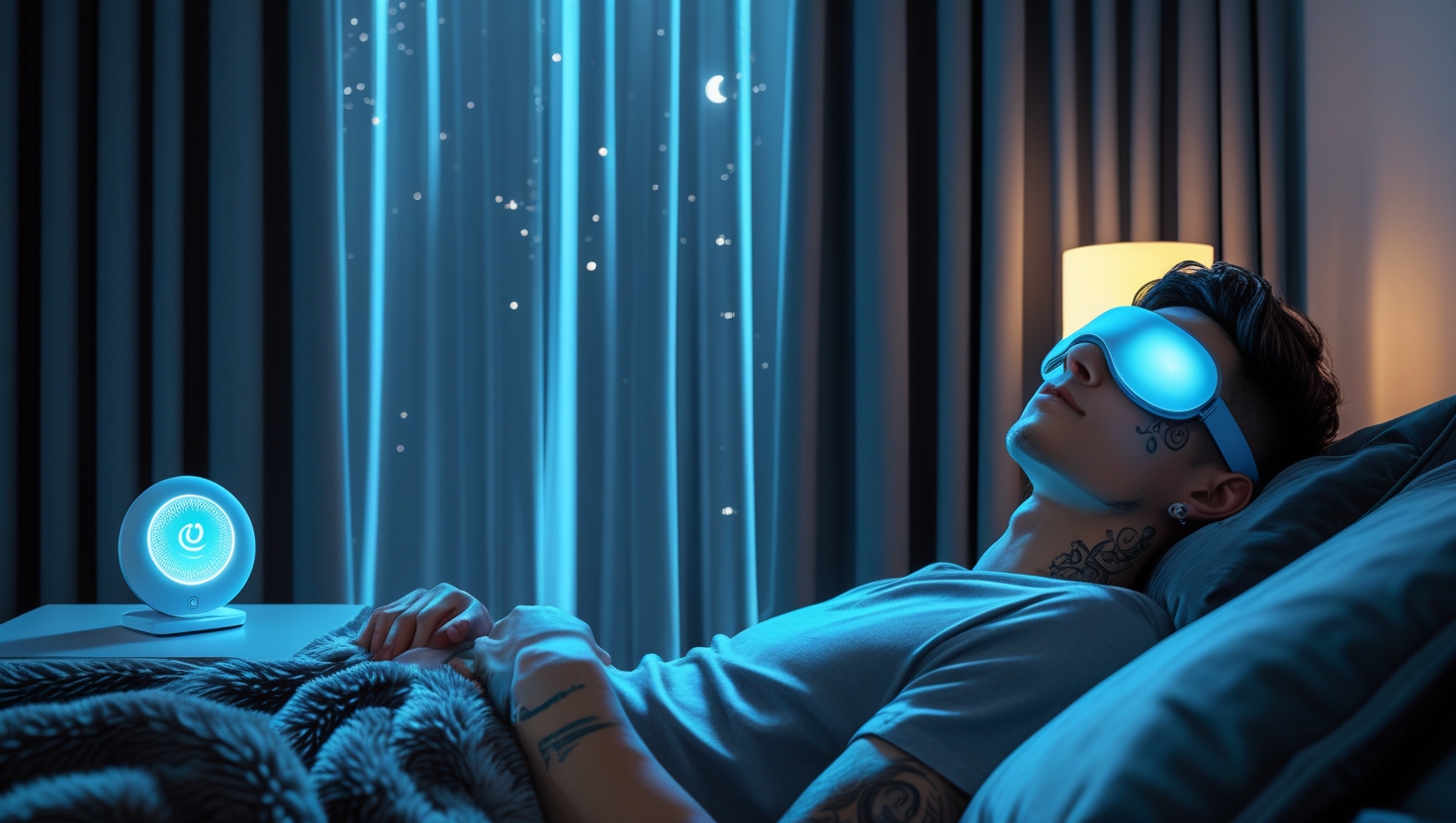Maximizing your sleep has never been trendier—or more confusing. Enter sleepmaxxing, a viral TikTok phenomenon built around the idea of treating sleep like a competitive sport. From cold rooms and blackout blinds to meditation, mocktails, and mouth tape, this guide will help you cut through the noise and unlock better rest—without the anxiety.
What Is Sleepmaxxing? The Viral Trend Explained
Sleepmaxxing is a digital-age wellness trend that encourages people to optimize every aspect of their sleep through habits, supplements, gadgets, and even extreme hacks. Born on TikTok and Instagram, the term blends “sleep” with “maxxing” (a slang for maximizing or optimizing), and has racked up over 125 million views across social platforms.
Originally embraced by Gen Z and Millennials, the sleepmaxxing movement reflects growing awareness about sleep’s impact on health, productivity, and mental clarity—especially post-pandemic. For many, it’s not just about sleeping more, but sleeping smarter.
The appeal? Biohacking your way to perfect sleep, with a toolkit full of metrics, gadgets, and bedtime rituals. But while sleepmaxxing inspires good habits, it also raises concerns about obsession and over-optimization.
Little-known fact: Despite its massive online presence, the term “sleepmaxxing” isn’t recognized in any official medical or psychological journals—yet.
Sleepmaxxing vs. Traditional Sleep Hygiene: What’s New?
Classic sleep hygiene recommends a consistent bedtime, reducing caffeine, and limiting light before sleep. Sleepmaxxing builds on these principles, but layers in a modern, often performance-driven twist.
Where sleep hygiene promotes balance, sleepmaxxing pushes intensity. Instead of “reduce screen time,” sleepmaxxing says, “eliminate all electronics 2 hours before bed.” Instead of a general sleep routine, it recommends tracking your chronotype and syncing to your biological rhythms with precision.
The biggest difference? Data. Sleepmaxxing embraces trackers, sleep scores, and trend charts, treating rest like a personal performance metric. It’s not enough to feel rested—now, you must prove it with stats.
Many practitioners also incorporate high-tech tools like smart mattresses, blue light-blocking glasses, and AI-guided sleep apps. They stack supplements, drink magnesium mocktails, and design rooms with military-grade darkness.
Little-known fact: Hardcore sleepmaxxers often plan their entire lives around their sleep chronotype—some even schedule work hours to match peak melatonin cycles.
The Science Behind Sleepmaxxing: What Actually Works?
Fortunately, many sleepmaxxing strategies do align with scientifically validated sleep hygiene principles.
Proven Techniques:
- Cool temperature (60–67°F): Helps initiate sleep by mimicking the body’s natural nighttime drop in core temperature.
- Darkness: Promotes melatonin production. Blackout curtains and sleep masks are genuinely effective.
- Routine: Going to bed and waking up at the same time stabilizes your circadian rhythm.
Nutrition and Supplements:
- Kiwis: Shown in studies to help with sleep due to antioxidants and serotonin precursors.
- Magnesium: May promote muscle relaxation and deeper sleep.
- Melatonin: Helpful for jet lag or short-term circadian resets but should be used cautiously.
Relaxation Techniques:
- Deep breathing, yoga, guided meditation, and progressive muscle relaxation are all science-backed.
What Doesn’t Hold Up:
- Mouth taping: Not only lacks evidence, but it may be harmful—especially for people with undiagnosed sleep apnea.
- Supplement stacking: Combining too many aids can lead to side effects and dependency.
- Tracking addiction: Constantly checking sleep metrics can create anxiety and worsen sleep—a condition now recognized as orthosomnia.
Little-known fact: Orthosomnia refers to sleep disruption caused by obsessing over sleep quality data—a condition increasingly linked to the sleepmaxxing lifestyle.
Sleepmaxxing Techniques: From Mainstream to Extreme
Mainstream Practices:
- Sleep environment optimization: Blackout curtains, white noise machines, and cooling sheets.
- Digital detoxing: Logging off screens 1–2 hours before bed.
- Gadgets: Tools like the Oura Ring, smart watches, and AI mattresses track heart rate, temperature, and movement.
- Supplements: Magnesium glycinate, L-theanine, and herbal teas.
- Mocktails: Non-alcoholic blends with tart cherry juice or magnesium powder.
Extreme Techniques:
- Mouth taping: Seals lips shut to force nasal breathing—risky for many.
- No alarms: Waking naturally may improve sleep cycles but disrupts daily schedules.
- Pineal gland meditation: Based on spiritual practices, lacks robust scientific evidence.

Case Study: A TikTok Experiment
One user documented her 30-day sleepmaxxing journey using daily journaling, Oura tracking, supplement stacks, and cold room setups. She reported increased energy but also noted that rigid routines made social life harder and sleep anxiety worse.
Little-known fact: Some sleepmaxxing communities recommend completely avoiding alarms to maintain natural cycles—but this can cause irregular wake times and affect job performance.
Market Trends: The Rise of Sleep Tech and Sleep Economy
The sleep economy is booming. In India alone, it’s expected to reach $28 million by 2024, driven by growing awareness and youth-led interest in wellness.
Top-selling products include:
- Weighted blankets: Promote deep pressure stimulation for calmness.
- Smart mattresses: Adjust temperature and track sleep metrics.
- Wearable sleep trackers: From Oura to Apple Watch, consumers now carry their sleep scores everywhere.
Gen Z and Millennials are fueling demand for sleep optimization gear, shifting priorities from productivity to recovery.
But there’s a catch. Many devices and supplements lack FDA approval or substantial clinical validation, raising concerns about efficacy and safety.
Little-known fact: Some of the most popular sleep tech items (like blue light glasses and AI headbands) are marketed heavily without large-scale peer-reviewed studies.
Real-World Results: Success Stories and Cautionary Tales
Successes:
Many users say sleepmaxxing transformed their mornings. After switching to cold, dark rooms and magnesium mocktails, they report improved energy, clearer thinking, and reduced anxiety. One Reddit user noted, “I haven’t needed coffee in weeks.”
Cautionary Tales:
Others share how overdoing it backfired. Over-tracking, expensive gadgets that failed to deliver, and hyper-focus on sleep routines left some with even more sleep issues.

Derek Antosiek’s Experience:
Derek joined a Reddit sleepmaxxing group and tracked his sleep with an Oura Ring. While he initially felt motivated, constant metric-checking worsened his anxiety. Sleep felt more like a performance than a restorative act. He eventually ditched the tracker—and started sleeping better.
Little-known fact: Sleepmaxxing can lead to “paralysis by analysis”—users get so caught up optimizing their sleep that they lose sleep over it.
Expert Opinions: What Sleep Doctors Really Think
Sleep specialists generally support core sleepmaxxing practices—cool rooms, consistent schedules, and relaxation. But they draw the line at risky or unproven methods.
Approved:
- Limiting blue light
- Gentle supplementation under guidance
- Meditation or stretching before bed
Cautions:
- Mouth taping can be dangerous.
- Supplement stacking has limited science and risks interactions.
- Sleep score obsession may lead to orthosomnia.
Experts also stress that some night-to-night variation is normal. Trying to perfect every metric can be more harmful than helpful.
Little-known fact: According to recent studies, most people naturally cycle through good and bad sleep nights, even with ideal conditions—so chasing perfection is unrealistic.
How to Build Your Own Evidence-Based Sleepmaxxing Routine
Instead of jumping into every TikTok hack, take a slow, science-based approach:
Step-by-Step Plan:
- Assess Your Current Habits: Use a sleep diary to note bedtime, wake time, interruptions.
- Fix the Foundations First:
- Stick to a consistent schedule
- Create a cool, dark sleep space
- Avoid caffeine after 2 pm
- Add One New Element at a Time:
- Try magnesium for a week, then evaluate
- Use a white noise app or blackout curtains
- Track Progress Gently:
- Don’t check your sleep score every day
- Focus on how you feel, not just numbers
Sleepmaxxing Toolkit (Science-Backed Only):
- Blackout curtains or mask
- Cooling sheets
- Magnesium glycinate
- Tart cherry juice (natural melatonin)
- Soft lighting after 8 pm
- Gentle yoga/stretch routine
Little-known fact: Just dimming your lights 60 minutes before bed can boost melatonin production by up to 50%, enhancing your body’s natural signal to wind down.
The Future of Sleepmaxxing: Trends to Watch
As sleepmaxxing evolves, expect even more AI-driven, personalized solutions:
- AI-powered sleep coaching apps that adjust routines based on behavior and biometrics
- Genetic sleep profiling to tailor supplements and schedules
- Non-invasive brain stimulation as a possible aid to deep sleep
- Social media “sleep influencers” creating monetized coaching platforms
Little-known fact: Some sleep clinics now offer “sleepmaxxing consultations”—premium services helping clients build optimized routines based on biometrics and lifestyle.
Is Sleepmaxxing Worth It?
When grounded in science, sleepmaxxing can genuinely improve your rest. But obsession, expensive gadgets, or chasing perfection can do more harm than good. The key is to start simple, stay flexible, and focus on how you feel.
Actionable Takeaways:
- Start with the basics—cool room, dark space, consistent schedule.
- Avoid extreme hacks like mouth taping or rigid supplement stacks.
- Introduce changes gradually, monitoring effects without fixation.
- Don’t chase perfect sleep scores—listen to your body instead.
- Focus on sustainable habits for lasting, meaningful improvement.
